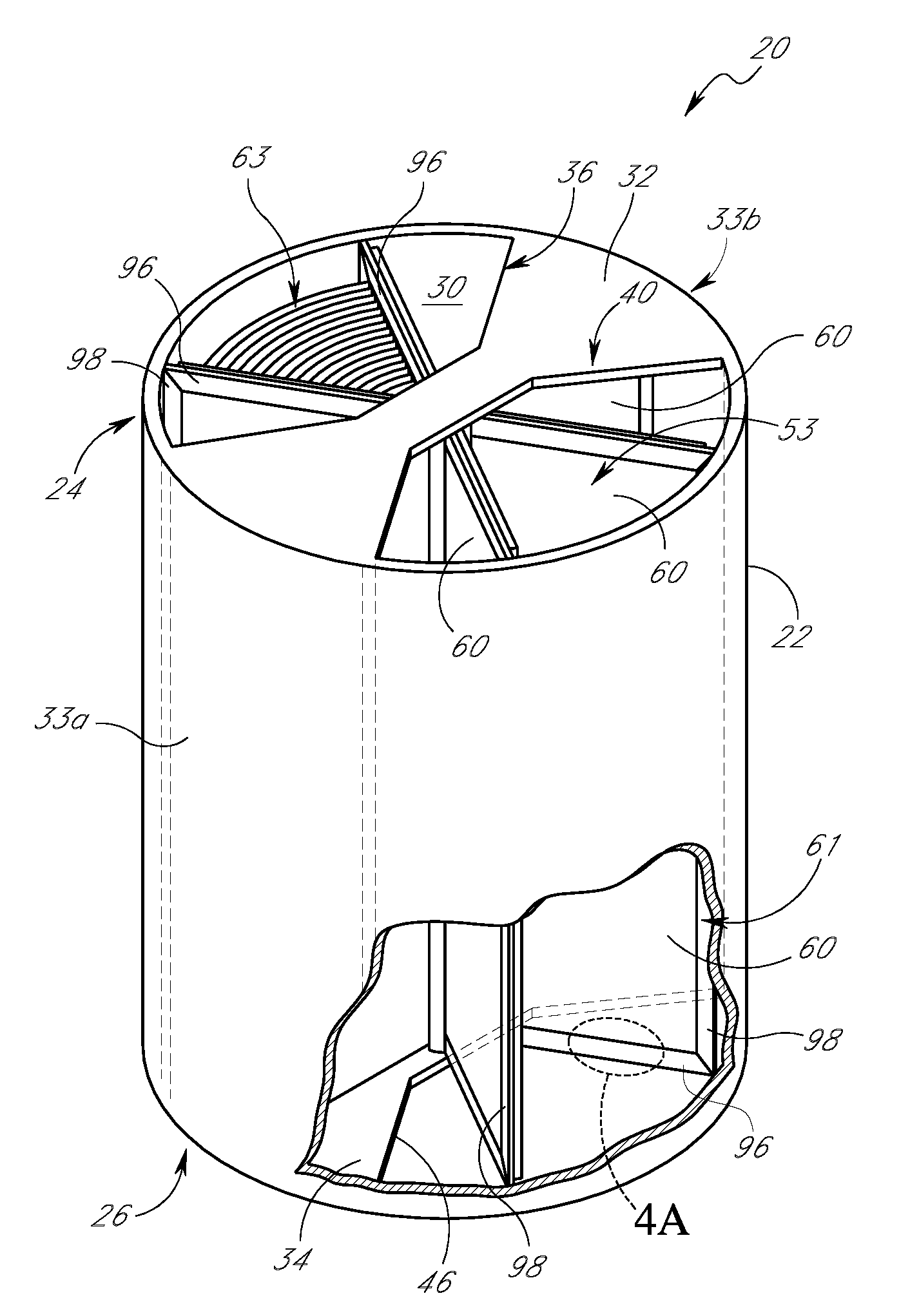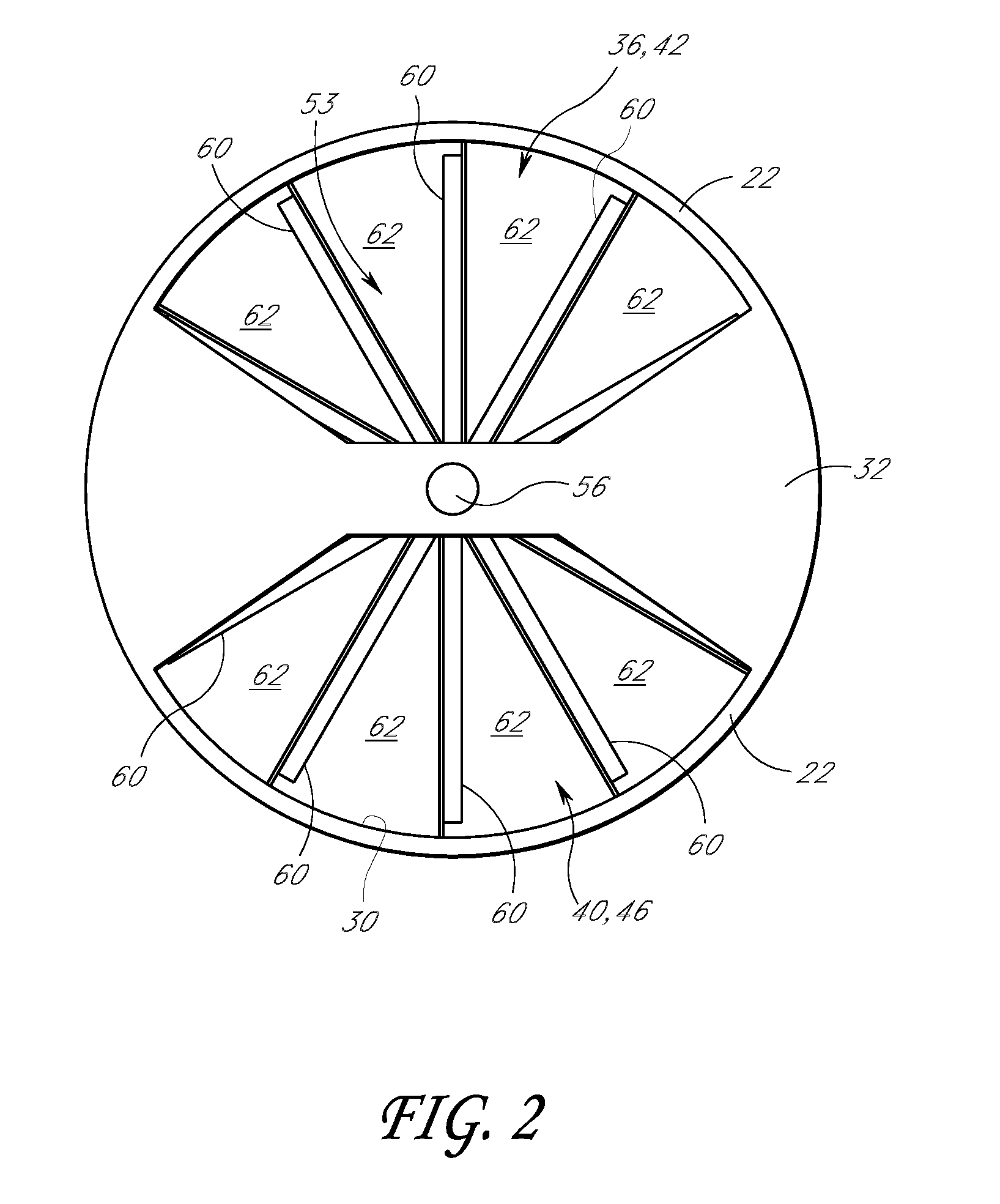Self-adjusting seal for a heat exchanger
a heat exchanger and self-adjusting technology, applied in indirect heat exchangers, lighting and heating apparatus, other domestic objects, etc., can solve the problems of reducing the thermal efficiency of heat exchangers, and affecting the operation of seals
- Summary
- Abstract
- Description
- Claims
- Application Information
AI Technical Summary
Benefits of technology
Problems solved by technology
Method used
Image
Examples
Embodiment Construction
[0020]Reference will now be made to the drawings wherein like numerals refer to like parts throughout. FIG. 1 is a perspective view of one embodiment of a regenerative heat exchanging apparatus (or heat exchanger) 20 in which seal assemblies 96, 98 (shown in FIGS. 4A-4C) are used. FIG. 2 illustrates a top view of the heat exchanging apparatus 20 of FIG. 1. The heat exchanging apparatus 20 includes a housing 22 that can have a substantially cylindrical shape. The housing 22 has a top end 24 and a bottom end 26. As used herein, the words “top” and “bottom” are with respect to the drawings and are not intended to limit the scope of the invention. In one embodiment, the heat exchanging apparatus 20 can be a Ljungstrom™-type Air Preheater. However, the heat exchanging apparatus 20 can be any suitable regenerative heat exchanger (e.g., Rothemuhle®-type Regenerative Air Preheater). Further details on regenerative heat exchangers and associated members can be found in U.S. Pat. No. 5,950,70...
PUM
 Login to View More
Login to View More Abstract
Description
Claims
Application Information
 Login to View More
Login to View More - R&D
- Intellectual Property
- Life Sciences
- Materials
- Tech Scout
- Unparalleled Data Quality
- Higher Quality Content
- 60% Fewer Hallucinations
Browse by: Latest US Patents, China's latest patents, Technical Efficacy Thesaurus, Application Domain, Technology Topic, Popular Technical Reports.
© 2025 PatSnap. All rights reserved.Legal|Privacy policy|Modern Slavery Act Transparency Statement|Sitemap|About US| Contact US: help@patsnap.com



